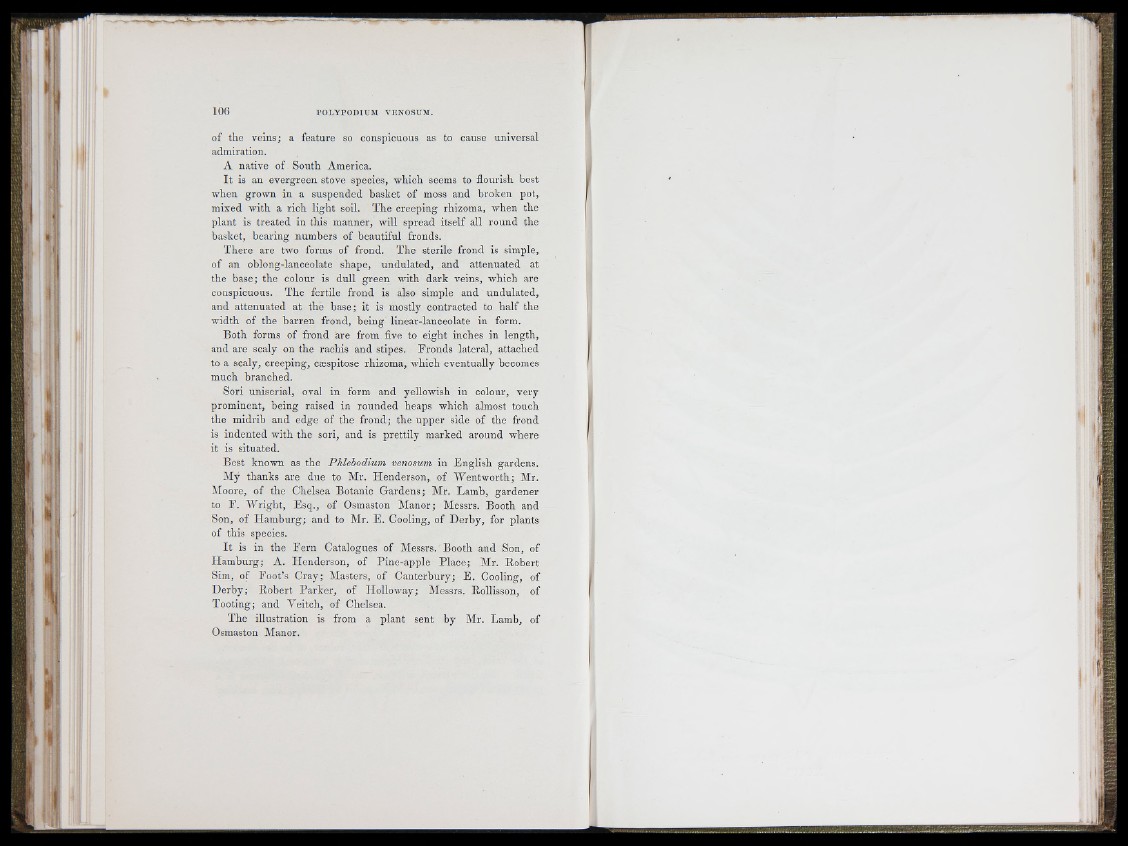
i l
p
of the veins; a feature so conspicuous as to cause universal
admiration.
A native of South America.
I t is an evergreen stove species, which seems to flourish best
•when grown in a suspended basket of moss and broken pot,
mixed with a rich light soil. The creeping rhizoma, when the
plan t is treated in this manner, will spread itself all round the
basket, hearing numbers of beautiful fronds.
T here are two forms of frond. The sterile frond is simple,
of an oblong-lanceolate shape, u ndulated, and attenuated at
the base; the colour is dull green with d a rk veins, which are
conspicuous. The fertile frond is also simple and undulated,
and attenuated at the base; it is mostly contracted to h a lf the
width of the b arren frond, being linear-lanceolate in form.
Both forms of frond are from five to eight inches in length,
and are scaly on the rachis and stipes. Fronds lateral, attached
to a scaly, creeping, cæspitose rhizoma, which eventually becomes
much branched.
Sori uniserial, oval in form and yellowish in colour, very
prominent, being raised in rounded heaps which almost touch
the midrib and edge of the fro n d ; the upper side of the frond
is indented with the sori, and is prettily marked around where
it is situated.
Best known as the Phlebodium venosum in E nglish gardens.
My thanks are due to Mr. Henderson, of W en tw o rth ; Mr.
Moore, of the Chelsea Botanic G ardens; Mr. Lamb, gardener
to F . AYright, E sq ., of Osmaston Manor; Messrs. Booth and
Son, of H am b u rg ; and to Mr. E . Cooling, of De rb y , for plants
of this species.
I t is in the F e rn Catalogues of Messrs. Booth and Son, of
H am b u rg ; A. Henderson, of Pine-apple Place; Air. Robe rt
Sim, of F o o t’s Cray; Alasters, of C ante rbury; E . Cooling, of
D e rb y ; Robe rt P a rk e r, of Holloway; Alessrs. Rollisson, of
Tooting; and A'^eitch, of Chelsea.
The illustration is from a plan t sent by Air. Lamb, of
Osmaston Alanor.